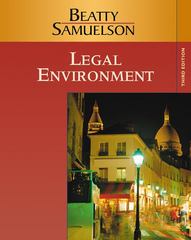Question
1.Suppose in Pakistan the macroeconomic variables i* (foreign interest rate), P (domestic aggregate price level), P* (foreign aggregate price level), Y* (foreign income level), e
1.Suppose in Pakistan the macroeconomic variablesi*(foreign interest rate),P(domestic aggregate price level),P*(foreign aggregate price level),Y*(foreign income level),e(domestic expected inflation),T(domestic net taxes), andG(domestic government spending) are exogenously given, the interest parity condition holds, and the expectations of the future economic trends remain unchanged. In this situation, if the foreign aggregate price level,P*, declines, the IS curve
a.
would not shift.
b.
would shift to the left.
c.
would shift to the right.
d.
may shift to the right or to the left.
10 points
QUESTION 2
1.In the short run, when the long-term prospects of the economy and parameters of the aggregate preferred expenditure are given, prices are sticky, the interest parity condition holds, and the product market is in equilibrium, as the interest rate declines, equilibrium income rises because
a.
exports rise.
b.
imports decline.
c.
investment expenditure rises.
d.
all of the above.
e.
none of the above.
10 points
QUESTION 3
1.If the central bank implements a conventional monetary policy of increasing the money supply to reduce the interest rate,
a.
the IS curve shifts to the left and LM curve rotates downward.
b.
the IS curve shifts to the right and the LM curve rotates upward.
c.
the IS curve shifts to the right and the LM curve rotates downward.
d.
the IS curve does not shift, while the LM curve rotates downward.
e.
the IS curve shifts to the right, while the LM curve does not shift.
10 points
QUESTION 4
1.This year the government of Bangladesh has introduced a fiscal stimulus package that significantly increases public expenditure. Because the government has problems borrowing in domestic and international credit markets these days, it asks the Central Bank of Bangladesh to print money and buy government bonds, so that the government will have sufficient money to spend.
Assume that the exchange rate is flexible and that the interest parity condition holds. Also, assume that the price level is exogenously determined and the conditions in the rest of the world remain unchanged. Finally, assume that the government's policy is viewed as temporary and has no impact on the course of the economy beyond the current year.
How would this policy affect the levels of private consumption and investment in Bangladesh this year?
a.
Private consumption and investment will both rise.
b.
Private consumption and investment will both decline.
c.
Private consumption will rise and investment will decline.
d.
Private consumption will rise, but investment may rise or decline.
e.
Private consumption will remain unchanged, while investment will rise.
f.
Private consumption will decline, while investment remains unchanged.
10 points
QUESTION 5
1.In 2018, the U.S. aggregate real GDP, Y, increased faster than it had been growing in the previous few years, while net exports declined. We want to figure out what factors may have caused this outcome. Assume that the markets for money and for goods and services were both in equilibrium at all times. We know that the LM curve did not shifted in that year. Which one of the following factors could have contributed to the higher GDP growth and lower net exports of the US economy in 2018?
a.
A reduction in net taxes.
b.
A decrease in the nominal interest rate.
c.
A decrease in the expected inflation rate.
d.
A decrease in the expected return on investment.
e.
A rise in the real incomes of US trading partners.
10 points
QUESTION 6
1.Argentina's economy has been experiencing high inflation and instability. To control inflation, the central bank had tried to make importable and exportable goods cheaper inside the country by selling its dollar reserves at low prices in domestic markets, thus raising the real exchange rate of the Argentinian peso against the US dollar. However, as a result of this policy, the central bank lost most of its reserves and in May 2020, Argentina defaulted on its foreign debt and lost its access to international capital markets. Now, the government and central bank want to restore the country's creditworthiness. To this end, they need to control inflation and stabilize the economy by reducing GDP, while increasing the country's net exports. Which combination of the following short-term policies candefinitelyyield a lower GDP and higher net exports?
a.
Increase money supply and keep government expenditure unchanged.
b.
Reduce government expenditure and keep money supply unchanged.
c.
Increase both money supply and government expenditure.
d.
Reduce both money supply and government expenditure.
Step by Step Solution
There are 3 Steps involved in it
Step: 1

Get Instant Access to Expert-Tailored Solutions
See step-by-step solutions with expert insights and AI powered tools for academic success
Step: 2

Step: 3

Ace Your Homework with AI
Get the answers you need in no time with our AI-driven, step-by-step assistance
Get Started


